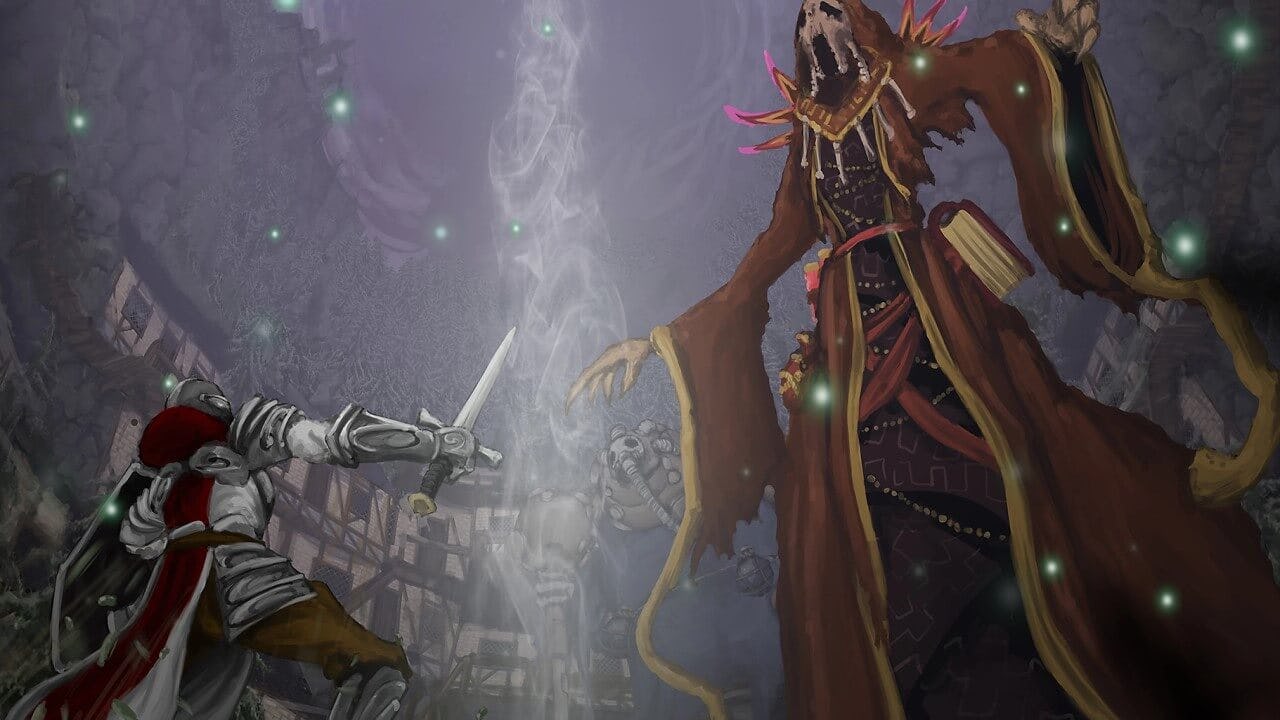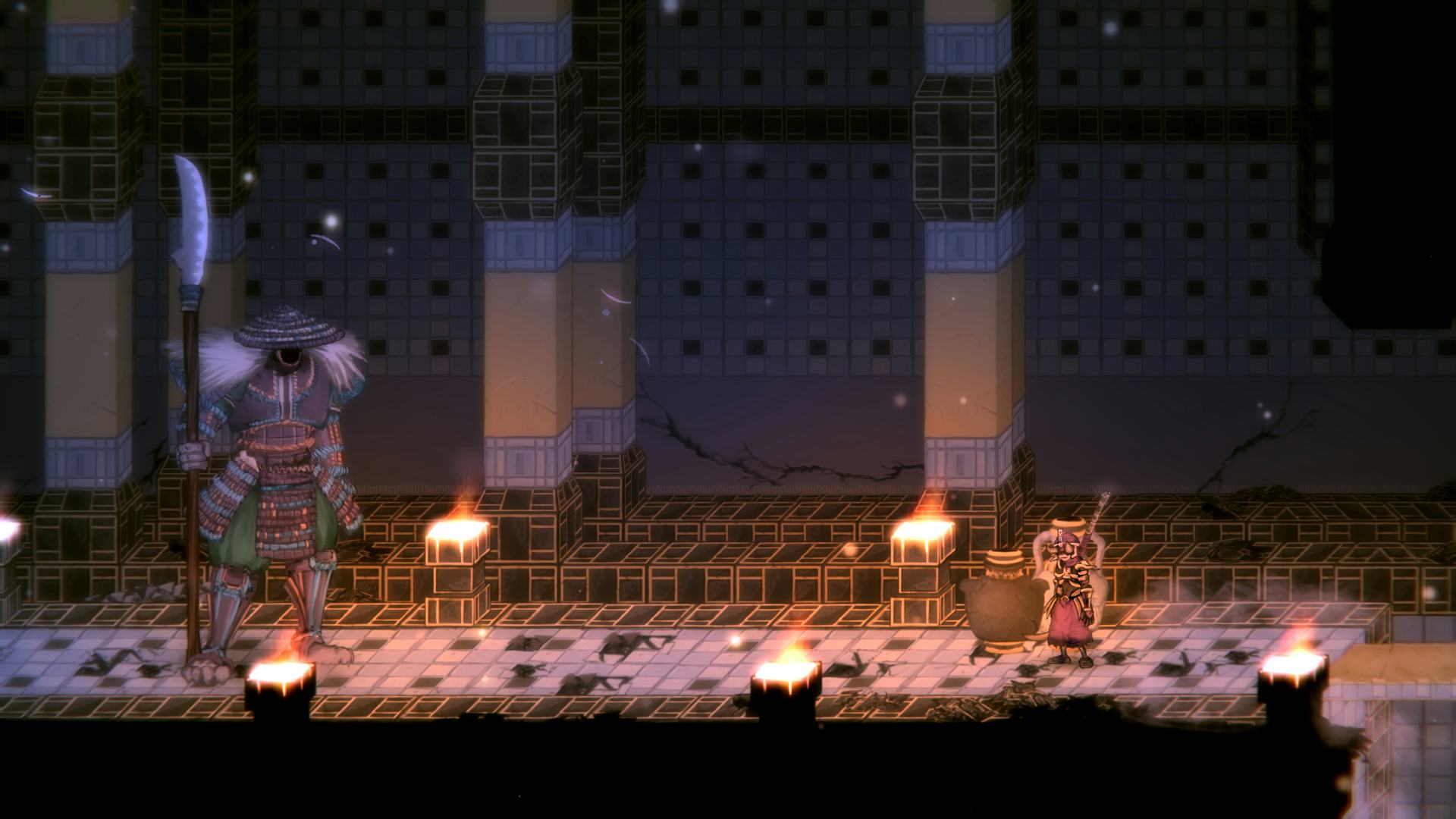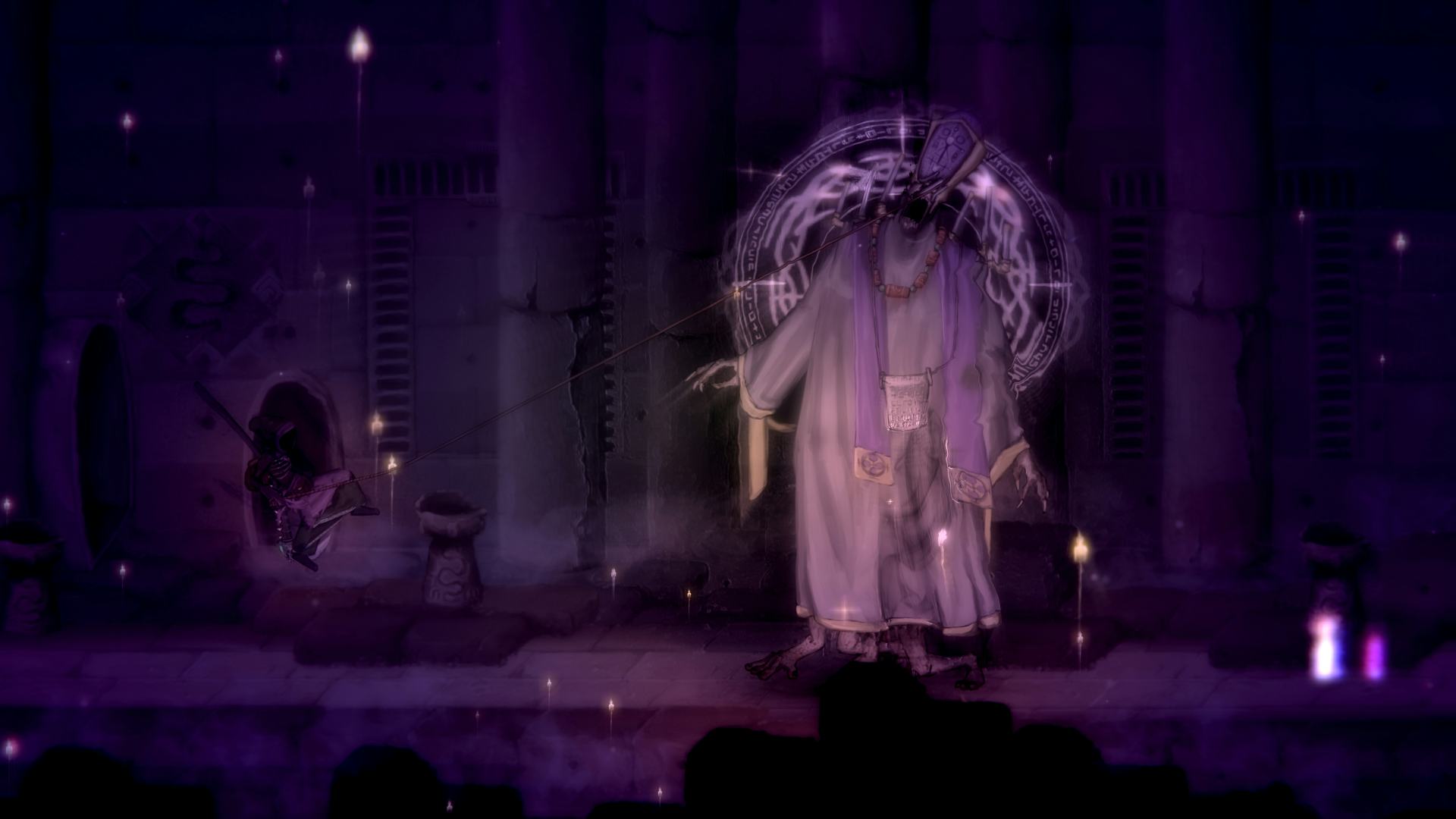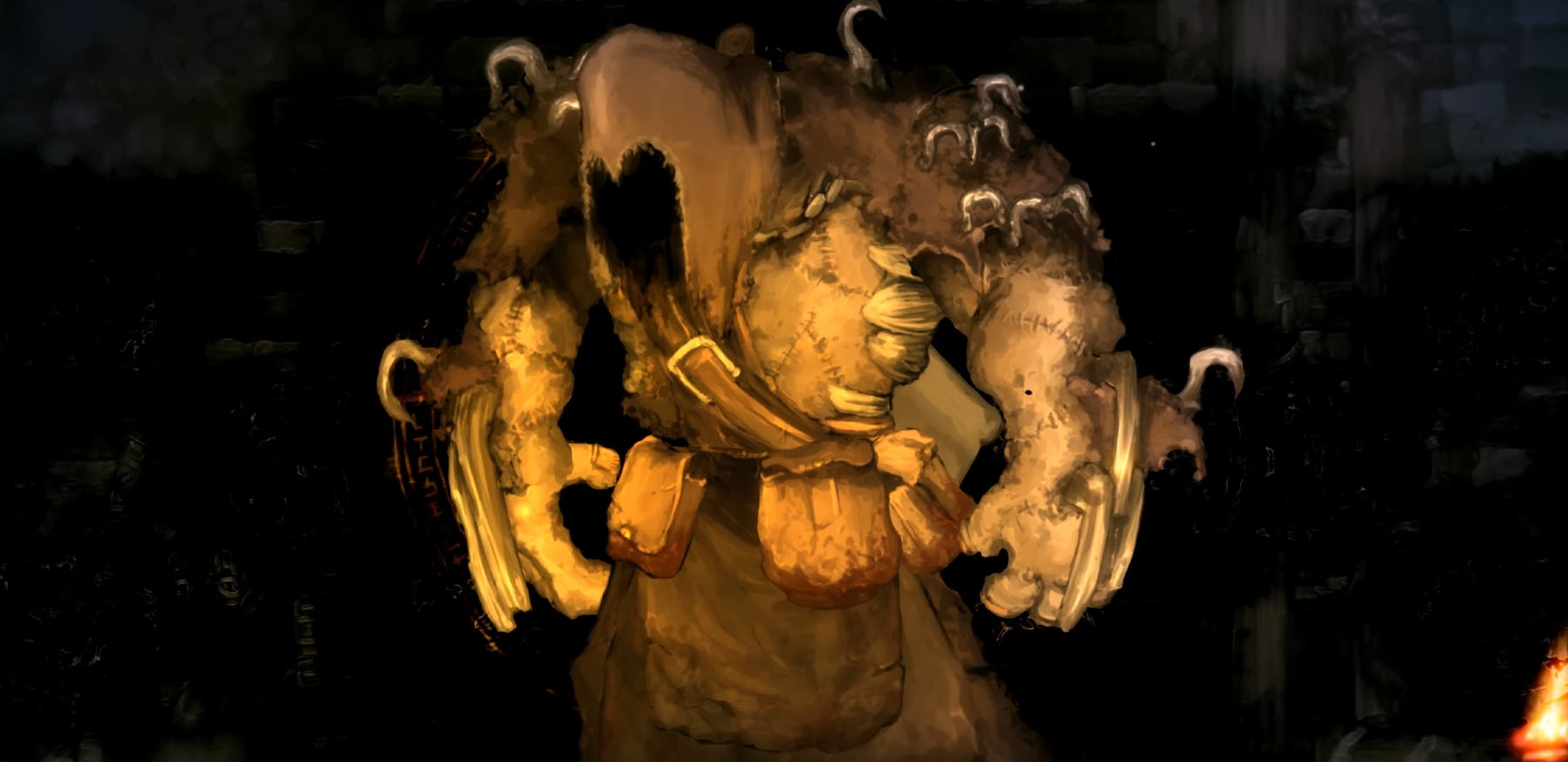
I finally stumble upon the malevolent wretch in a filthy, drab ruin.
I’d been searching high and low for Ghor Lorhotha, one of Salt and Sacrifice’s many Mages — dark, massive creatures that roam the map. The journey was full of deadly ghouls and traps, and left me with few resources remaining. I begin the battle hopeful, but within seconds know that I do not stand a chance. Lorhotha slices at me with its colossal cleaver, then hurls a flurry of disgusting flies at me. With my movement slowed, I am helpless as the blade comes crashing down into my helpless body. Over a half an hour of work for nothing. Woof.
This happens time and time again in Salt and Sacrifice, one of the most frustrating and disappointing gaming experiences in recent years.
Salt and Sacrifice is the follow-up to 2016’s Salt and Sanctuary, a 2D Soulslike RPG from Ska Studios. In it, you play as a prisoner in a dilapidated land corrupted by dark magic, with the goal of hunting down evil Mages who brought darkness to the kingdom. You’ll battle enemies, explore massive labyrinthian stages, upgrade your character, and face tricky platforming sections that test your skills — and your mettle. While many of the game’s returning mechanics work well enough, some new features are downright infuriating.
Lost its way

Deep exploration makes its predecessor, Salt and Sanctuary, alluring because it rewards you with useful items and surprises nearly every step of the way. While that design philosophy is still present in Salt and Sacrifice, the sequel does not learn from the original’s mistakes.
There is still no in-game map. That alone isn't a dealbreaker, but you also cannot fast travel between save points like you could in the original. That makes basic exploration feel regressive and repetitive, especially when you have to spend another 30 minutes trekking back to a boss to maybe defeat it. It’s easy to get lost, and backtracking is a common occurrence.
Combat feels clunky and slow, even if your character wears no armor at all. And a far too stingy stamina bar makes for excruciatingly slow and unfair battles. This is amplified during intense boss encounters seemingly designed with fast-paced combat in mind. To mitigate this, you have to spend far too much time grinding to upgrade your stamina. That makes the already bad pacing even worse.
A dreadful hunt

New in Salt and Sacrifice are the Mage Hunts, which require you to chase after enormous enemies that move from stage to stage. They spawn with powerful allies, all of which are constantly on the move, and because their location is both random and constantly changing, the hunting process is, for lack of a better term, a total shitshow of randomness.
Only after you’ve dealt enough damage to the Mage does it trigger a boss fight. If you use up all of your healing potions and then die, that’s too bad. They’re gone forever, leaving you forced to grind for the resources needed to craft more. This happens far more often than it should and serves as yet another example of the game getting in its own way. I at least give credit to Ska Studios for trying something new in Salt and Sacrifice, even if the result isn’t always for the better.
Mage Hunts do at least yield nifty resources for crafting powerful gear, but the rewards don’t make up for the game’s many flaws. Even if you have the best armor in the game, it won’t help you defeat resource scarcity, the sluggish combat system, or the tedious approach to exploration.
Grotesquely gorgeous

Salt and Sacrifice‘s greatest strength is in the art direction. Creature designs are nightmare fuel in the best way possible, such as the aforementioned Ghor Lorhotha, Wearer Of Tortured Flesh, a boss that literally wears the flesh of its victims. Ghor looks like a witchy version of Leatherface, with stitches all over its body. Its hood leaves you to imagine what its horrible face looks like, which enhances the horror that much more.
Cartoonish, hand-drawn aesthetics offset the frightening subject matter, and the end result is an off-kilter, drab world that almost feels welcoming thanks to the flat colors. We’ve seen plenty of disturbing games that offer a more realistic visual approach such as Bloodborne or The Evil Within, but Salt and Sacrifice stands apart thanks to the way it blends its aesthetics with its unsettling subject matter.
Soulslikes are appealing because of the sense of accomplishment they evoke, offering tremendously difficult battles that — with practice — can be overcome. Every death feels fair, and the design philosophy is fine-tuned in such a way that feels intentional and deliberate. Salt and Sacrifice, on the other hand, achieves difficulty with clunky design, which completely misses the point of what makes a good challenge worth the time. Instead, the sacrifice of wasted time here is more than enough to make you salty.
6/10
Salt and Sacrifice is available now for PS4, PS5, and PC. Inverse reviewed the game on PC.
INVERSE VIDEO GAME REVIEW ETHOS: Every Inverse video game review answers two questions: Is this game worth your time? Are you getting what you pay for? We have no tolerance for endless fetch quests, clunky mechanics, or bugs that dilute the experience. We care deeply about a game’s design, world-building, character arcs, and storytelling come together. Inverse will never punch down, but we aren’t afraid to punch up. We love magic and science-fiction in equal measure, and as much as we love experiencing rich stories and worlds through games, we won’t ignore the real-world context in which those games are made.







